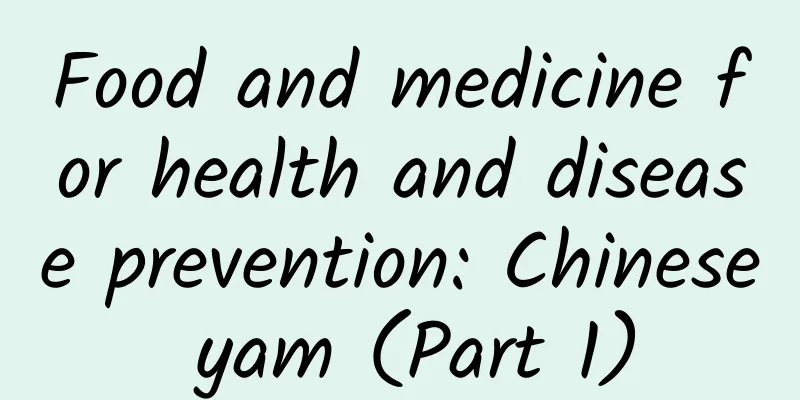Food and medicine for health and disease prevention: Chinese yam (Part 1)

|
Yam Wildyam The most effective anti-cancer components of yam: mucus polysaccharides and saponins The main nutrients of yam: vitamin A, B group, C, E, carbohydrates, protein, saponin, yam alkaloids, calcium, iron, phosphorus, potassium, mannan and fiber Dietary health benefits
The best way to prevent cancer
Tips for processing yam Yams contain special mucus proteins and alkaloids, which can easily cause itchy skin on hands when peeling them. Therefore, it is best to wear rubber gloves before handling yams. If yam mucus accidentally contacts the skin, wash it with salt water or soapy water to relieve the itchy feeling. In addition, after peeling the yam, you can soak it in salt water to keep the surface white and avoid brown oxidation. The anti-cancer effect of yam
Nutritionist's Tips
This article is provided by Human Think Tank Publishing House and is excerpted from the book Quick Reference to the Health Benefits of Anti-Cancer Foods. The original author is Xiao Qianyou, a health care lecturer and nutritionist at Chang Gung University of Science and Technology. |
<<: Common health-preserving ingredients can also improve physical fitness (Part 2)
>>: Food and medicine for health and disease prevention: Chinese yam (Part 2)
Recommend
What are the treatments for primary dysmenorrhea?
Dysmenorrhea is a common disease among women. 75%...
Can I eat mutton after uterine fibroid surgery? Are most uterine fibroids benign?
Generally, clinical patients should pay attention...
Does irregular menstruation affect ovulation?
Irregular menstruation may affect ovulation and t...
Swimming is prone to fungal vaginitis
Swimming pools in summer are places where bacteri...
Does adnexitis affect women's lives?
After suffering from gynecological diseases, many...
What is the best way to treat uterine fibroids?
Uterine fibroids are a common gynecological disea...
How to regulate irregular menstruation
Irregular menstruation has a great impact on wome...
What are the types of cervicitis?
A common pathological change of cervicitis. The c...
What are the symptoms of uterine fibroids? Is menstrual abnormality also a manifestation of uterine fibroids?
Uterine fibroids are one of the most common benig...
Premature menopause must be prevented early
Should premature menopause be prevented in advanc...
New Taipei City: Clenbuterol found in Ruifang Haramachi Japanese hotpot
The controversy over the use of ractopamine in Am...
What are the symptoms of cervicitis?
There are many reasons for cervical inflammation,...
What does an egg-sized uterine fibroid look like? How big is an egg-sized uterine fibroid?
What does an egg-sized uterine fibroid look like?...
Introduction to the hazards of endometrial tuberculosis
Some women think that the endometrium will shed o...
What methods can be used to check for pelvic inflammatory disease?
What methods can be used to check for pelvic infl...









